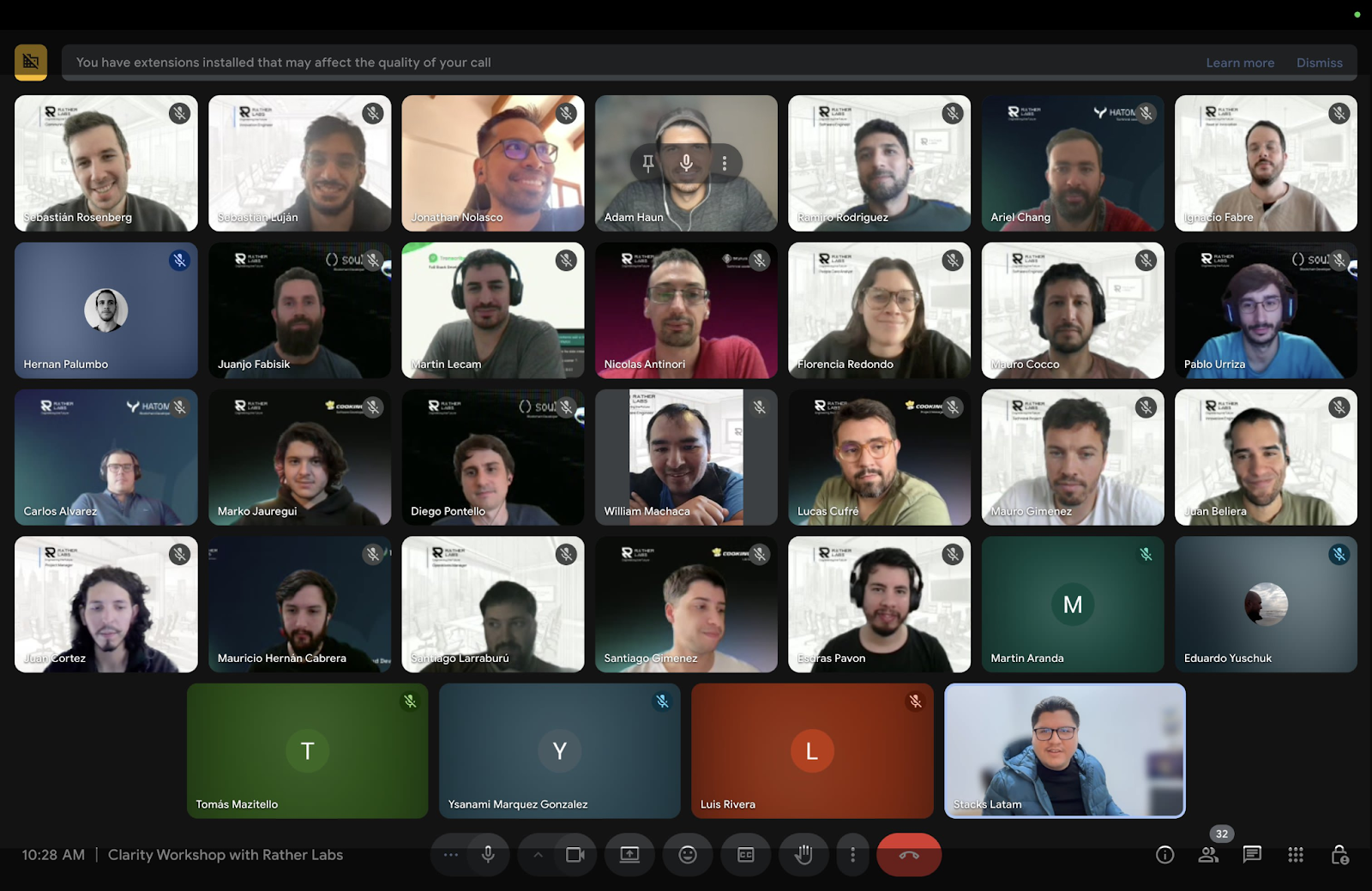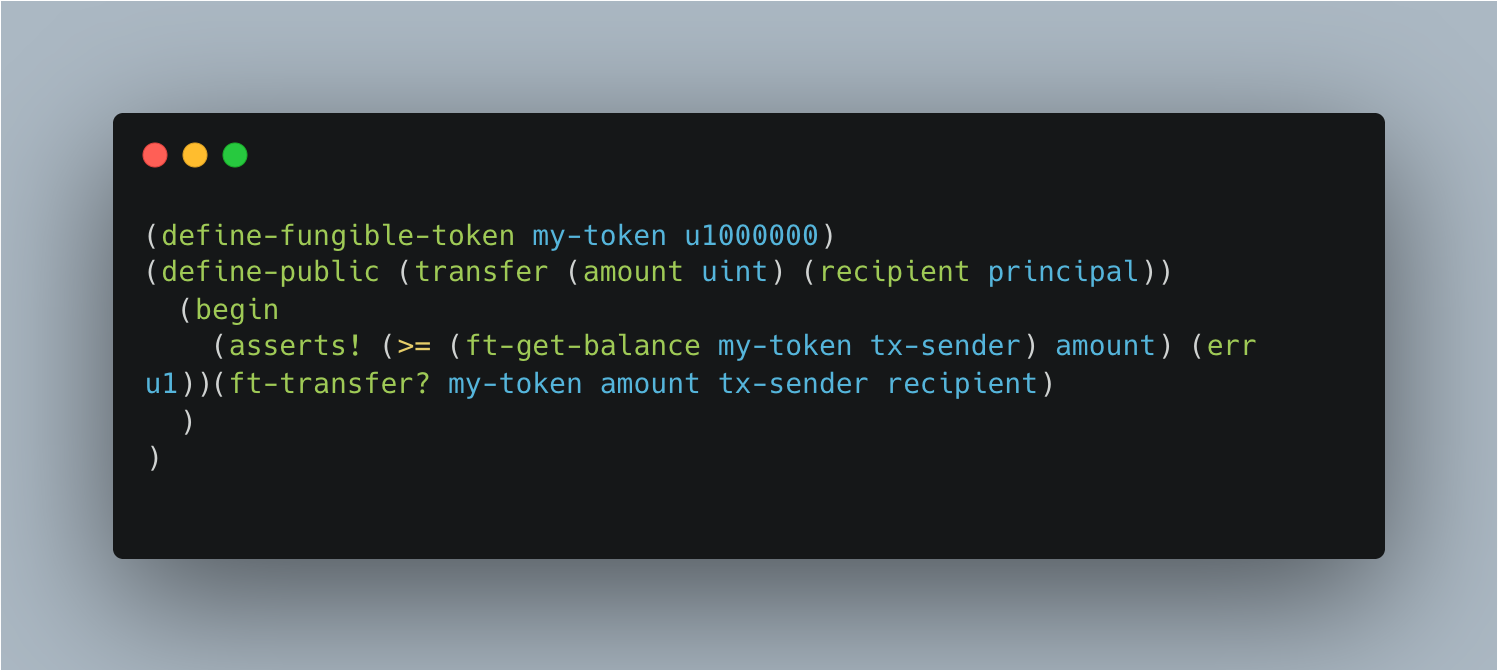Why Stacks Matter in the Bitcoin Era
Bitcoin, with its $1.2 trillion market cap as of September 2025, is the cornerstone of decentralized finance, securing more value than any other blockchain. However, its focus on security and simplicity limits its programmability for decentralized applications. Stacks, a Layer 2 blockchain, bridges this gap by enabling smart contracts anchored to Bitcoin’s unmatched security. Paired with Clarity, a secure and predictable programming language, Stacks empowers developers to build Bitcoin-native dApps. At Rather Labs, we’ve contributed to Bitcoin DeFi through projects like Solv and Liquidium, and our team is trained and ready to develop on Stacks after a comprehensive Clarity workshop last week, conducted by Stacks LatAm and supported by the Stacks Foundation itself. This article explores how Stacks unlock Bitcoin’s potential and why they’re a game-changer for Web3 innovation.

Understanding Stacks: Bitcoin’s Smart Contract Layer
Stacks is a Layer 2 blockchain that extends Bitcoin’s functionality, enabling smart contracts and dApps while leveraging Bitcoin’s Proof-of-Work (PoW) for security. Its Proof-of-Transfer (PoX) consensus allows miners to spend Bitcoin to mine Stacks blocks, with transactions settled on Bitcoin’s blockchain for maximum trustlessness. Stackers, who lock STX tokens, earn Bitcoin rewards, aligning Stacks’ economy with Bitcoin’s.
The Nakamoto Release (2024) enhanced Stacks with sub-10-second transaction finality and introduced sBTC, a 1:1 Bitcoin-pegged asset that enables programmable Bitcoin for DeFi and dApps. With over $500 billion in Bitcoin capital now accessible, Stacks supports a thriving ecosystem, including DeFi platforms like StackingDAO and NFT marketplaces tied to Bitcoin ordinals. This architecture, Bitcoin as the settlement layer, Stacks as the execution layer, offers developers a secure, scalable platform for Bitcoin-native applications.
Clarity: The Language Built for Predictable Smart Contracts
Clarity, Stacks’ purpose-built programming language, is designed for secure and predictable smart contracts. Inspired by Lisp, Clarity is interpreted (not compiled) and fully decidable, eliminating infinite loops and unpredictable gas costs. Its on-chain source code publication ensures transparency, making contracts easy to verify. Clarity prioritizes predictability, security, and simplicity, ideal for Bitcoin-secured dApps.
Here’s a basic Clarity contract for transferring tokens:

Clarity’s strict design minimizes bugs and ensures predictable outcomes, crucial for high-stakes Bitcoin applications. Its post-conditions (e.g., verifying balance changes after transactions) enhance security, while Bitcoin’s finality ensures predictable execution. Clarity’s syntax is lean and avoids vulnerabilities like reentrancy attacks, making it perfect for its purpose: building secure, Bitcoin-anchored smart contracts.
Different Tools for Different Goals: Clarity and Solidity serve distinct ecosystems. Solidity’s flexibility suits Ethereum’s dynamic environment, but it can introduce complex bugs. Clarity’s rigid structure, tailored for Stacks, prioritizes predictability and security, aligning with Bitcoin’s reliability for high-stakes applications.
Key Features and Best Practices for Clarity Development
Clarity’s standout features include traits for composable contracts, enabling standard interfaces (e.g., for tokens) that promote interoperability. It supports both fungible tokens and NFTs, with sBTC integration unlocking Bitcoin-backed DeFi. For example, developers can create lending protocols using sBTC as collateral, all secured by Bitcoin’s blockchain.
We recommend these best practices:
- Leverage post-conditions: Define expected state changes (e.g., balance updates) to catch errors.
- Validate inputs: Use asserts! to prevent overflow or unauthorized access.
- Test with Clarinet: This Stacks-native tool simulates blockchain interactions for robust testing.
- Use safe math: Rely on Clarity’s built-in functions like + or - to avoid underflows.
These practices, inspired by industry standards, ensure secure and efficient Clarity contracts, particularly for DeFi and NFT applications.
Pro Tip: Experiment with the Clarity playground on Stacks’ developer portal to prototype contracts interactively.
The Future of Stacks, Clarity, and Bitcoin Innovation
Stacks is set to redefine Web3. Cross-chain bridges will soon connect Stacks to other ecosystems, while scalability improvements will rival Ethereum’s performance. sBTC’s adoption could unlock Bitcoin’s $1T+ capital for DeFi, positioning Stacks as a Web3 hub. Clarity’s secure design makes it the ideal language for Bitcoin-secured dApps.
The Stacks ecosystem evolves through Stacks Improvement Proposals (SIPs), a collaborative process where the community, including experienced developers and builders, shapes the Stacks future. A key discussion currently centers on SIP-31, which aims to unlock funding for developers and creators, fostering innovation and growth within the Stacks ecosystem. This community-driven approach ensures Stacks remains a dynamic hub for Bitcoin-secured Web3 innovation.
Ready to build on Stacks? Rather Labs is prepared to develop projects with Clarity, leveraging our Bitcoin DeFi experience.






%204.svg)






